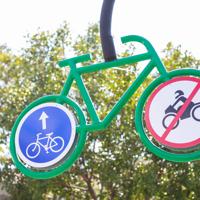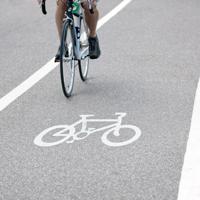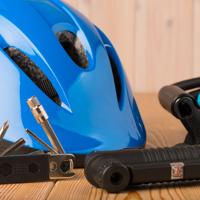Accident Prevention
Discover practical tips and insights on accident prevention tailored for urban cyclists, helping you navigate city streets more safely.
Bicycle commuting offers numerous benefits, from reducing your carbon footprint to improving personal health. Yet, like all forms of transportation, it comes with its own set of risks. As someone passionate about urban cycling, I want to share insights on accident prevention. Let’s explore habits and practices that might enhance safety for cyclists.
Understanding Common Causes of Bicycle Accidents
Awareness is the foundation of accident prevention. According to a 2017 study by the U.S. Department of Transportation, the most common causes of bicycle accidents include:
- Motorist errors: Such as failing to yield the right of way or distracted driving.
- Cyclist errors: Failing to follow traffic signals or riding against the flow of traffic.
- Poor road conditions: Potholes, debris, and unclear markings can be hazardous.
- Low visibility: Particularly during dawn, dusk, or poor weather conditions.
Understanding these factors can guide the safety measures you may incorporate into your routine.
Equip Yourself Properly
The right gear can significantly diminish the risk of accidents:
-
Helmet: While it may not prevent accidents, wearing a helmet can reduce the severity of injuries. Ensure it fits well and meets safety standards.
-
Reflective Gear and Lights: Increase your visibility with bright clothing, and use front and rear lights. According to a study from the Danish Road Directorate, cyclists using lights during the day have been shown to reduce accident occurrence by about 19%.
-
Mirrors: Consider attaching a mirror to your helmet or handlebars. This small addition might allow you to notice vehicles approaching from behind.
Master Cycling Skills
Improving your biking skills can make a difference:
-
Practice stopping and starting smoothly: This will help in navigating through traffic light stops and unexpected obstacles.
-
Handle your bike in different weather conditions: Wet roads, for instance, can be slippery, so practicing caution in varying conditions can show you how to maintain control.
-
Learn to communicate with drivers: Use hand signals to indicate turns or stops. Predictability can enable motorists to react appropriately to your movements.
Choose Your Route Wisely
Not all roads are created equal for cyclists. Here’s what you can consider:
-
Select less congested roads: Even if it extends your commute, quieter roads can often be safer.
-
Use dedicated bike lanes when available: Research suggests that protected bike lanes decrease the likelihood of cyclist injuries by approximately 90%.
-
Familiarize yourself with local traffic patterns: Understanding rush hour traffic can assist in time management and decision-making for safer routes.
Prioritize Situational Awareness
Staying alert is essential:
-
Scan the environment continuously: Look out for potential hazards like opening car doors, pedestrians, or erratic drivers.
-
Limit distractions: Avoid using your phone while riding and keep earphones down in volume or out entirely to better hear your surroundings.
-
Predictable Behavior: Invest time in learning about traffic signals and laws in your area, then adhere to them consistently.
Create a Safety Network
Being part of a community can offer additional protection:
-
Share your planned route with a friend or family member: Especially on longer commutes or unfamiliar paths.
-
Join local cycling groups: You can gain insights about common dangerous areas and share experiences about safe cycling practices.
-
Advocate for better infrastructure: Engage with city officials to push for more bike-friendly urban planning. Research from the League of American Bicyclists suggests that community advocacy plays a crucial role in enhancing cyclist safety at an infrastructure level.
Conclusion
While cycling in urban areas can pose challenges, through mindful practices and prudent decision-making, we may significantly reduce the risk of accidents. This is not just about individual safety—your choices contribute to a collective movement fostering more cycle-friendly urban environments. Let’s strive to make city streets safer for everyone.
Remember that each ride is unique and demands its own precautions. Continual learning and adaptation are as vital to safe cycling as the wheels beneath your feet.

Discover the common hazards faced by cyclists in urban environments and how to avoid them, ensuring a safer commuting experience.

Learn how to navigate urban environments safely with defensive cycling techniques that can reduce your risk of accidents.

Learn the essential traffic laws that every cyclist should know to stay safe and navigate urban environments responsibly.

Explore essential high visibility gear that can enhance your safety while cycling in urban environments.

Discover practical strategies for planning your bicycle commuting route, balancing safety, efficiency, and enjoyment.

Tips and advice for making your bike commute easier, healthier, and more enjoyable.

Explore the importance of wearing a helmet while cycling and how to choose the right one that suits your urban riding style.

Learn essential cycling safety and security tips and practices for a safer ride.